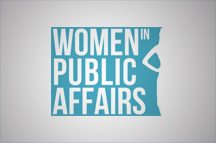Women in Public Affairs (WiPA) have published a new report. Who's talking? an analysis of the 2015 party conferences shows that last year men outnumbered women 2 to 1 as speakers at fringe events. On average men made up 66% of fringe speakers while women represented only 34%.
This is particularly concerning given that party conferences are supposed to represent a broader cross-section of the membership compared to the leadership and parliamentary parties whose pipeline issues are well documented.
In the light of this evidence, WIPA is urging the political parties and stakeholders who host and organise these fringe meetings to commit to having a diverse range of voices represented on their panels.
From next year we want parties to commit to ensuring at least 99% of all fringes have at least one woman on the panel. We also want to see parliamentarians challenge organisers if this does not happen.
Party conference season is a time for political parties to showcase their vision, their talent and their policies to the rest of the country. For the big political parties, they know that for these few days at conference, they are almost guaranteed wide broadcast and print media coverage and many events and speeches are often streamed on live TV.
Conference is their chance to show who they are, what values they have, and how they would take the country forward. During high-profile party leader speeches, it is glaringly obvious the effort party communications teams go to to ensure their leader is framed by a diverse selection of people – men, women; old, young; black, white. Therefore, it is all the more disappointing to and that this conscious effort to promote diversity stops here and does not reach the abundance of fringe speaking opportunities.
I have attended party conferences for almost 10 years now as both a political party member of staff and as a public affairs professional. I have often thought the speaking slots seem to go heavily in the favour of men and wondered why.
We do not have anything like representation in our Parliament. But the beauty of party conference is that you do not only have to have parliamentarians taking the speaking slots. There is a whole range of people to choose from - councillors, party staffers, experts. So why are we in a position where on average men are taking up two thirds of all possible speaking opportunities across the three big party conferences?
At Women in Public Affairs, our main aim is to inspire women to achieve their potential in the public affairs industry. We hope that this report will act as a catalyst for political parties to achieve gender balance across their speaking opportunities at party conference, with the aim of inspiring more women to achieve their full potential in politics.
Read the full report online here.















